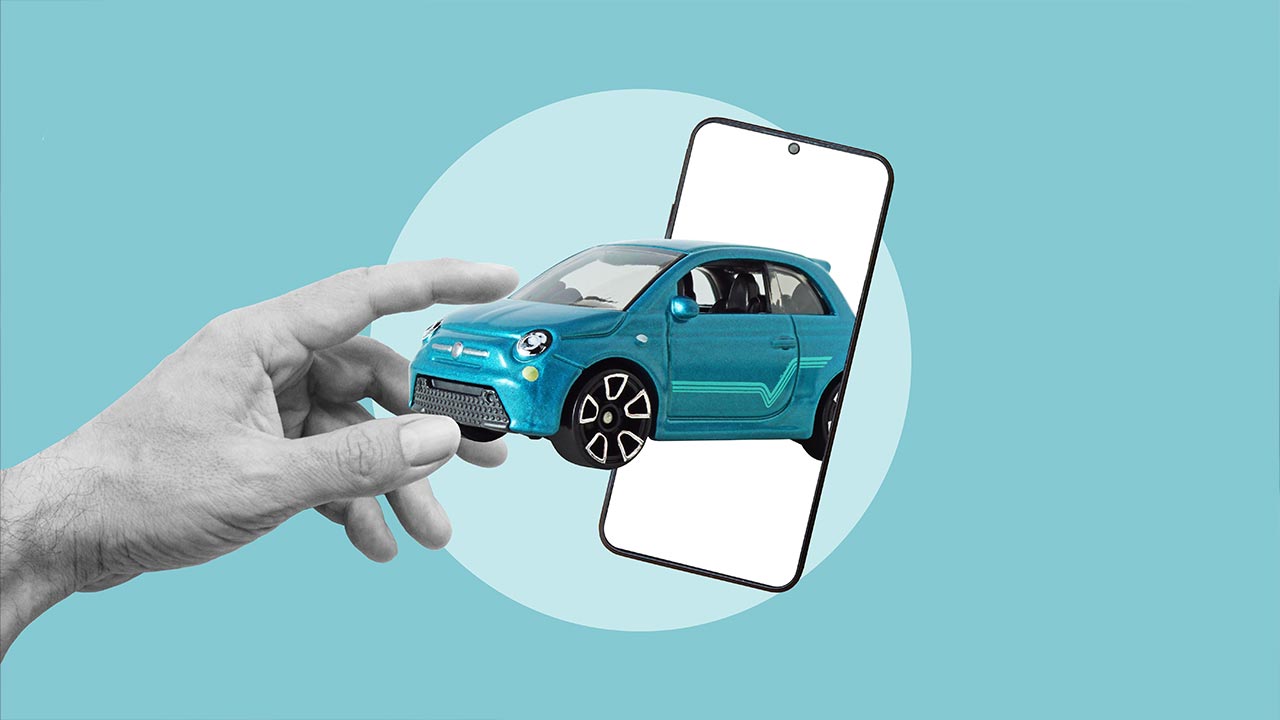Over the past few years, the car-buying cycle has significantly evolved with new trends and technologies, driving consumers to accelerate the shopping process from home. For many, the car-buying experience has shifted to an almost exclusively digital space. Now is the time for car manufacturers and dealerships to fully embrace this digital transformation, evolving online sales processes and advertising strategies to provide customers with a seamless, personalized digital journey.
Consumers are increasingly comfortable doing business online, with many relying on digital channels to research options and gather information before making a purchase. Thanks to online showrooms and car delivery services, some customers have even skipped the physical dealership altogether. To stay competitive, it’s crucial for automotive brands to leverage a data-driven digital strategy that aligns with modern buyer behaviors.
Learn how Choozle’s digital advertising tools can optimize your automotive campaigns.
How to Develop a Full-Funnel Automotive Digital Marketing Strategy
Shoppers are starting online: Research shows that the automotive customer journey lasts, on average, anywhere from five to twelve weeks, with online and offline touchpoints leading up to the final decision. Within the first week, 95% of shoppers turn to digital resources as their primary source of information. This is why investing in digital marketing strategies that target high-intent audiences is critical—building awareness early in the journey ensures your brand stays top-of-mind when purchase decisions are made.
Brand familiarity is key, as most buyers begin their journey without knowing which car they want. By deploying tactics like Connected TV (CTV), video, and audio advertising, you can reach broad yet targeted audiences on their most influential devices, driving meaningful engagement for the next stage of the buyer’s journey.
Pro Tip: Combining programmatic display ads and keyword targeting can help brands get in front of potential buyers early. Explore Choozle’s keyword-targeting features here.

Meeting Customers on All Devices: The Importance of Omnichannel
Cross-device targeting is a must. When customers are exposed to brand awareness messaging, they will continue to narrow down their shortlist, and serious buyers will dive deeper into researching your website, related sites, and competitors. During the consideration phase, automotive marketers can leverage third-party data segments and search retargeting to keep your brand visible on relevant websites.
Search retargeting is particularly powerful, allowing you to reach audiences based on their search activity, browsing behavior, and intent signals. By curating targetable audiences based on users’ online searches, you can reach potential customers exactly when they are researching and increase the likelihood of conversions. You can even optimize campaigns by targeting users at specific points in their journey—whether they are in the early stages or closer to making a purchase decision.
60% of all automotive searches now come from mobile devices. Optimizing your mobile presence with click-to-call ads and mobile-friendly landing pages ensures you capture potential buyers on the go.
Retargeting Tactics to Boost Car Dealership Sales
At this point in the journey, customers are close to making a decision and are ready to visit dealerships to test drive or finalize their purchase. To ensure you reach these bottom-of-funnel prospects, use retargeting ads to maintain engagement and push them toward a purchase.
Retargeting is often the final step of a digital campaign, reminding users who have already interacted with your brand—whether through display ads, inquiries, or test drive bookings—that they’re close to making a decision. These ads are crucial for recapturing interest and guiding potential buyers to your showroom.
Ready to elevate your retargeting strategy? See how Choozle’s platform can help.

Leveraging First-Party Data to Maximize Sales and Fixed Operations Revenue
One of the most valuable yet often underutilized resources in a dealership’s marketing toolkit is their CRM and first-party data. By tapping into this rich data source, dealerships can craft personalized marketing strategies that drive not only vehicle sales but also maximize revenue from fixed operations, particularly service and parts, which are often the most profitable revenue streams for dealerships.
- Marketing to Past Lease Customers Using First-Party Data: A dealership’s CRM holds vital information about past lease customers who are nearing the end of their lease. By leveraging first-party data, you can create personalized campaigns that target these individuals with offers such as lease renewal incentives or new vehicle promotions. These highly targeted campaigns ensure you’re reaching customers who are already familiar with your brand, making it easier to build long-term relationships and boost repeat sales.
- Excluding Recent Buyers with First-Party Data: On the flip side, using first-party data allows you to exclude customers who have recently made a purchase—specifically those who have bought within the last 3 to 6 months. These customers are less likely to be in the market for a new vehicle, and targeting them could result in wasted ad spend. By excluding these recent buyers, you can focus your budget on customers who are actively considering a purchase, improving campaign efficiency and maximizing return on investment (ROI).
- Maximizing Fixed Operations Revenue with First-Party Data: In addition to driving sales, first-party data can be a game-changer for fixed operations marketing, which focuses on service and parts. Service and parts departments are key profit centers for dealerships, often generating higher margins than vehicle sales. With first-party data, you can reach your existing customer base with personalized offers and service reminders, driving them back to your dealership for post-sale services.
Service Reminders: Use your CRM to send timely service reminders based on vehicle mileage or time since the last service. Targeted email or SMS campaigns can encourage customers to schedule maintenance or repairs.
Seasonal Promotions: Leverage seasonal service promotions to offer incentives such as winter tire checks or summer AC tune-ups. These offers can be tailored to your customers’ specific vehicle needs based on your CRM data.
Parts Promotions: Use first-party data to target customers needing specific parts based on their vehicle model or previous service history. Special discounts on parts or service bundles can increase conversions in this often-overlooked revenue area.
Pro Tip: By integrating your CRM with programmatic advertising platforms like Choozle, you can automate audience segmentation based on purchase and service history, ensuring you’re always targeting the right customers with relevant, data-driven offers—whether it’s for a new car or an oil change.
Track Offline Attribution for a Full-Funnel View
Don’t lose sight of the offline impact of your digital campaigns. Setting up offline attribution allows you to bridge the gap between online engagement and in-store purchases. By integrating geolocation data and analyzing the customer’s digital touchpoints, you gain a full view of how your campaign influenced a sale. This insight is invaluable for both sales and marketing teams as it highlights what worked and where adjustments can be made for even better performance.

Key Takeaways for a Winning Automotive Marketing Strategy
To remain competitive in today’s automotive market, your digital advertising strategies must align with modern buyer behaviors:
- Embrace full-funnel marketing: From awareness to purchase, every step of the journey must be covered.
- Use omnichannel and cross-device strategies to engage consumers across mobile, desktop, and other platforms.
- Leverage search retargeting and third-party data to meet customers where they are in their journey.
- Prioritize mobile-first strategies, as mobile searches dominate the automotive space.
- Track offline attribution to measure the real impact of your digital efforts on dealership visits and sales.
Automotive marketing strategies are changing, but by keeping your digital advertising up to date, capturing and utilizing the most relevant data, and honing in on actionable leads, your marketing and sales teams can capitalize on the huge amount of car shoppers researching online right now.
Ready to boost your car dealership’s digital sales? Leverage advanced automotive digital marketing strategies with Choozle. Contact us today!






